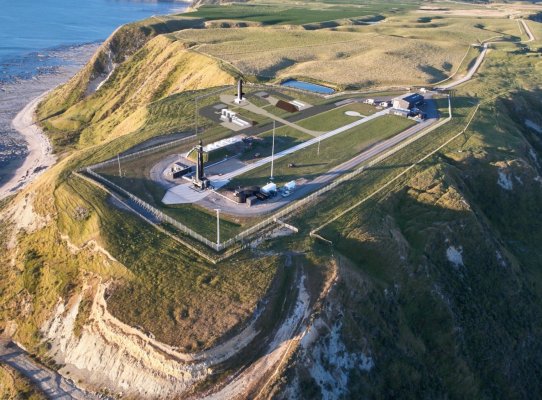Rocket Lab’s next Electron mission will include another marine recovery attempt of the rocket’s booster, the latest step by the company to advance its reusability program.
The mission, called “Baby Come Back,” will take off from Rocket Lab’s Launch Complex 1 on New Zealand’s Mahia Peninsula. The launch window opens no earlier than July 14. As part of the mission, the Electron rocket will carry several customer payloads to space, include a 4 CubeSat mission for NASA; two radio frequency satellites for Spire Global; and a demonstration satellite for Space Flight Laboratory.
The mission for NASA, dubbed Starling, will test “swarm” satellite technologies, including autonomous maneuvering and onboard relative navigation between spacecraft.
After launch, Rocket Lab will attempt what it calls a “marine recovery” of the Electron booster, using a parachute to enable a controlled splashdown of the stage in the ocean and fishing it out with a customized vessel. The booster will then be transported back to the company’s production complex for analysis and — hopefully — refurbishment for future flights.
Rocket Lab has developed in parallel two separate techniques to recover Electron boosters: marine recovery, as outlined above, and catching the booster midair using a specialized helicopter. The latter is about as challenging as it sounds. The company has attempted the helicopter method twice, with the first attempt ending in a partial success (the helicopter grabbed hold of the booster, but released it immediately). During the second attempt, one of the helicopter pilots called off the catch due to a momentary loss of telemetry data from the booster.
The company has recovered the stage from the ocean during several previous missions. Rocket Lab gave the green light to launch a pre-flown Rutherford engine in April, the first time one of the company’s Rutherford engines will see space twice. In the announcement about the engine reuse, Rocket Lab said that Electron withstands ocean splashdown well.
“Extensive analysis of returned stages shows that Electron withstands an ocean splashdown and engineers expect future complete stages to pass qualification and acceptance testing for re-flight with minimal refurbishment,” the company said in the statement. “As a result, Rocket Lab is moving forward with marine operations as the primary method of recovering Electron for re-flight.”
Marine recovery is certainly more straightforward, and if Rocket Lab can figure out how to refurbish the booster components at relatively low cost, it could prove to be a winning technique for the company.
